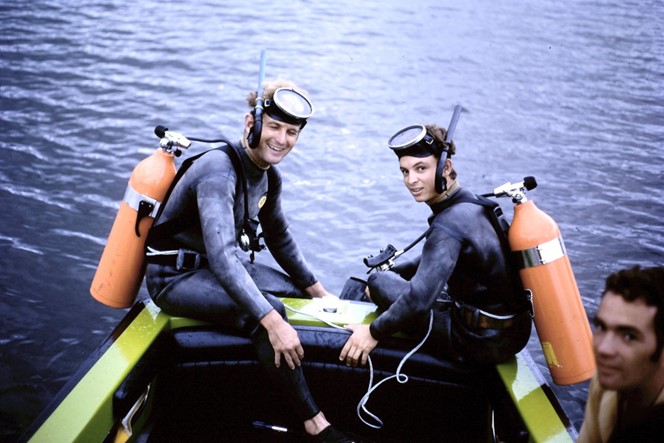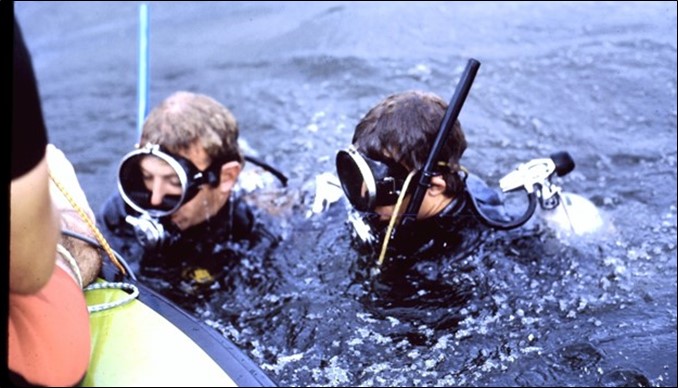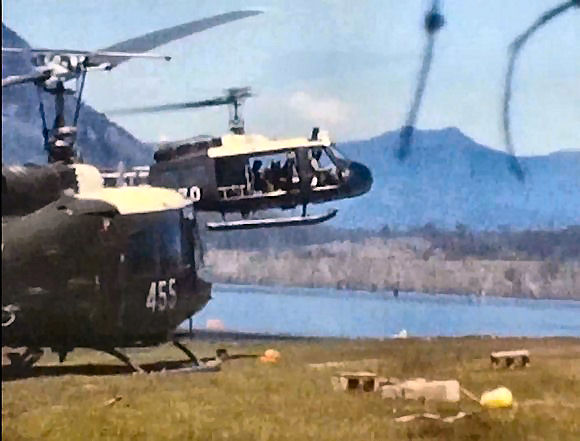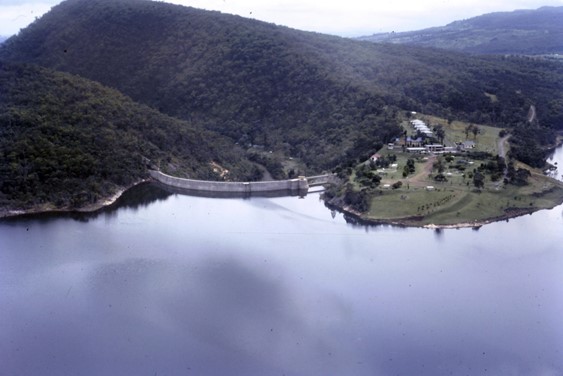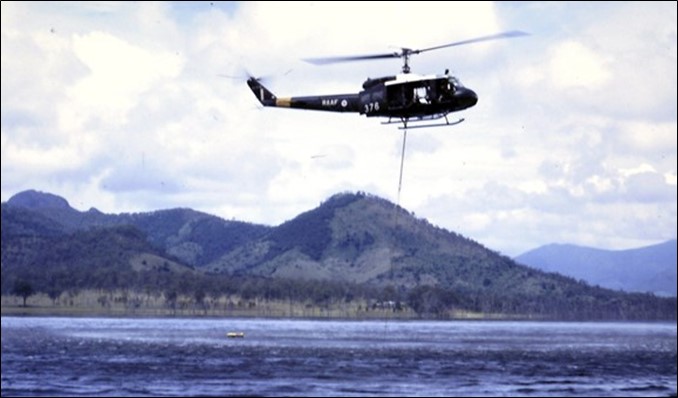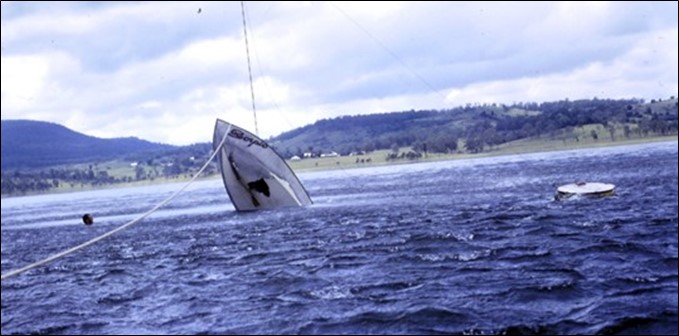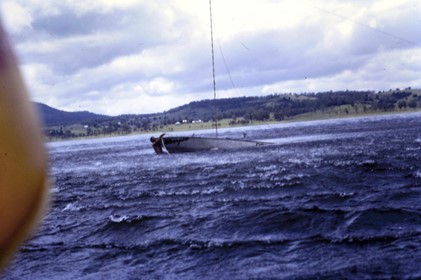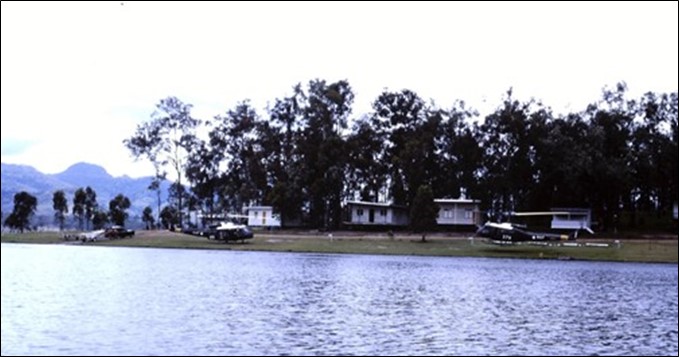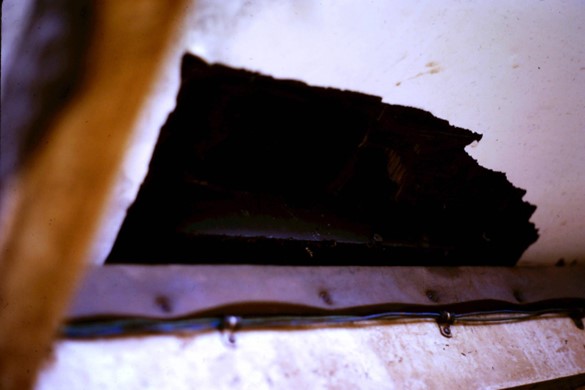|
|
||
|
||
|
Privacy Policy | Editorial Policy | Profit Policy | Join the Association | List of Members | Contact us | Index | Links |
||
|
Back Go to page: 1 2 3 4 5 6 7 8 9 10 11 12 13 14 15 16 17 18 19 20 Forward |
||
|
|
||
|
My Story |
||
|
Contents:
|
||
|
|
||
|
Air Marshal Robert Chipman, AM, CSC.
Air Marshal Rob Chipman, AM, CSC was appointed Chief of Air Force in July 2022. He replaces Mel Hupfeld.
Rob joined the Royal Australian Air Force in 1989 as an Officer Cadet at the Australian Defence Force Academy, graduating from Sydney University with an Honours degree in Aeronautical Engineering in 1992.
He completed the Pilots Course in 1994, F/A-18 Operational Conversion in 1995 and Fighter Combat Instructor Course in 1999. Following various operational and instructor assignments, he commanded No 75 Squadron from 2006-2009 and No 81 Wing from 2013-2014. In 2008, No 75 Squadron was awarded the Duke of Gloucester Cup for the most proficient flying squadron and the Kittyhawk Trophy in 2009 for the most proficient fighter squadron.
Air Marshal Chipman has staff experience in capability development roles within Capability Development Group and Air Force Headquarters. He has completed a tour as Director of the Australian Air and Space Operations Centre within Headquarters Joint Operations Command. In 2015, he was an inaugural Director of Plan Jericho, an Air Force transformation program intended to deliver joint, integrated air and space capability for the Australian Defence Force.
On promotion to Air Vice-Marshal in 2019 he served as Australia’s Military Representative to NATO and the European Union. He was the Head of Military Strategic Commitments, responsible for the strategic level management and situational awareness of current and potential Australian Defence Force commitments from January 2021, until his selection as Chief of Air Force and promotion to Air Marshal in July 2022.
He deployed on Operation SLIPPER in 2012 as a Battlecab Director in the United States Air Force 609th Air and Space Operations Centre. He deployed on Operation OKRA in 2014 as inaugural Commander Air Task Unit 630.1, for which he was awarded a Conspicuous Service Cross in 2015. He was appointed a Member of the Order of Australia in 2019 for his exceptional service to the Australian Defence Force in coalition air operations, air combat capability preparedness, and strategic capability development and sustainment.
Air Marshal Chipman has completed a Masters in Business Administration and graduated as a fellow of the Defence and Strategic Studies Course in 2016. He is a Graduate of the Australian Institute of Company Directors and Oxford Advanced Management and Leadership Programme. He is also an alumni of the Cranlana Institute and has completed the United Nations Senior Mission Leaders Course.
Air Marshal Chipman is married to Alyce and has four sons. He enjoys keeping fit and reading.
He has outlined his intentions for the Air Force during his tenure. See HERE.
|
||
|
Companies are bragging about making plants taste like meat. Cows have been doing that forever.
|
||
|
Salvage mission of RAAF Amberley Ski Club boat Scorpio from Lake Moogerah
Brendan (Curley) Godwin Kev (Shorty) Collins
Lake Moogerah is a beautiful camping and holiday spot in the heart of south east Queensland's Scenic Rim. It is located one hour's drive south west of Brisbane via the Cunningham Highway
The club had its own boat but we had a member Pete Prunster, Prunner to his mates, who had his own boat as well. Pete made the boat in the RAAF Amberley hobby club. The club’s boat was named Tumbleweed and Prunner’s boat was named Scorpio. After the end of the Vietnam war, 9 Sqn choppers were relocated to Amberley. They used Scorpio for rescue winching exercises on Moogerah. On one water skiing weekend, the guys managed to sink Scorpio right out in the middle from what is now Camp Lawrence, in 70 feet or water. The ski rope floated to the surface and it was tied off to a tyre. Prunner got quotes to salvage it and they were prohibitively expensive.
We had 2 different ski ropes. The normal slalom rope was 50 feet long and the marathon rope was 70 feet. The marathon rope had floats on the handles. We almost always used the slalom ropes but someone just happened to be doing some marathon practice when the boat sank. The ski rope floated to the surface and it was taut. So we knew the boat was in exactly 70 feet of water.
Regarding the sinking, Kev (Shorty) Collins recalls that he was not there when it happened. He thinks he went home to Goondiwindi for the Saturday night, and returned to Moogerah mid afternoon on the Sunday some time after it happened.
One idea we had was to "borrow" some life rafts from safety equipment, take them down and tie them on, then inflate them hoping to float the boat to the surface. Rather dangerous, but we took that idea to the guys at safety equipment and it was one of those guys who suggested 9 Sqn choppers. He phoned a mate he knew there who asked us to come down to discuss it.
Kev went down to 9 Sqn for a casual chat. He mentioned to the contact “hey, you know our ski boat that you use for winching exercises?” The contact replied “yes” and said “they would be needing it again in about 2 weeks for more exercises”. Kev then told him the news that it had sunk. The contact replied “that’s not good, what are we going to use for our exercises?” Kev then made the suggestion that he was leading to with his questions. He asked “we were thinking, would it be possible to get a chopper to lift it up for us?”
In quick succession, the questions came:
· how heavy was the boat, · how deep, · any good anchor points on the hull, · can we get down and tie ropes securely on, suggest "D's" (D shackles)
Yeah, this sounds like a good exercise. The contact thought that was a great idea and said let me talk to the CO about that. The CO walked out saying that it was a great idea and that he would take 2 choppers, one to do the lifting and the other for observation and for all the tourists.
John Mackie remembers the CO as Peter Hale.
So we convinced the 9 Sqn pilots to lift it out. Brendan (Curley) Godwin was the only one who’d done a scuba diving course. He organized the rental of all the necessary scuba gear, tanks etc. You could not rent scuba equipment unless you had completed a certified diving course and held a certificate. Brendan took Kev, who helped build it and knew where all the engine mounts were, down on a dive and we tied ropes around the engine mounts.
This necessitated giving Kev (right) a crash course in scuba diving. You just can’t do a dive like that without knowing certain basic information. Like how to clear you mask. Every 33 feet is another atmosphere of pressure. What if we have to buddy breath? Etc. Doing a 70 foot dive without knowledge is extremely dangerous. Diving courses are conducted in 17 feet or half an atmosphere. Not many people can claim a 70 foot dive under two atmospheres in zero visibility for their first dive. Kev and Shep had completed a Hookah dive off North Queensland not long before. Neither had any training or a certificate. Hookah dives are normally in 20-30 feet.
Hookah rigs deliver air from a compressor on the surface down to a diver below connected to the compressor with an air hose. Knowing we were in 70 feet of water enabled us to calculate bottom time which was about 30 minutes.
Another RAAF chap Perry McGill from ACS (Aircraft Construction Sqn) owned his own boat, Slime. We borrowed this boat for the dive. The following photo was probably taken by Perry.
|
||
|
|
||
|
Brendan and Kev about to dive off the borrowed boat Slime. Rope tied around our waists. We told Dixie (foreground) if we didn’t come back they could use this photo at our funeral.
About half way down we passed through a very cool layer of water. There was a very marked drop in water temperature. As we descended into the depths it became pitch black. The bottom 20 feet was all mud. We couldn’t see the glasses in front of our faces. We had a 12V 100W spot light, which Kev had organised, powered off a spare battery in the boat above. If one held the spot light and shone it at the other 1 metre away, the other person could not be seen. If he held the spot light from 1 metre away and shone it at himself he could just see the light. The only way we could communicate was to be face to face with the spot light in between using hand signals. It took a full tank of air each to get the ropes tied securely around the engine mounts. Brendan had to give Kev 5 minutes warning before we had to make our ascent. There was 10 minutes of air left, 5 were kept in reserve.
Kev still gets shivers today recalling going down when we hooked the ropes on, talk about being 22, ten foot tall and bullet proof.!! One of the other club members John (Dixie) Dixon was in the surface boat during the dive. He recalls Brendan surfacing after the dive with a bleeding nose from the 2 atmospheres of pressure. We had less than 5 minutes of air each left in our tanks when we surfaced. Brendan had completed some 20 to 30 dives before this one and at least one in over 100 feet,
|
||
|
|
||
|
Brendan (L) and Kev surfacing after completing the dive.
|
||
|
|
||
|
Iroquois choppers at Moogerah for rescue exercises circa 1973.
|
||
|
9 Sqn brought in 2 choppers for the salvage mission. They were the Iroquois utility military helicopters Bell UH-1 nicknamed Huey. Hueys 376 & 455. The salvage Huey was 376, and 455 accompanied 376 on the exercise. Kev flew out with the lead chopper as observer/liaison to show where to put down etc and he has some photos of that enroute. They didn't mind him taking photos, but requested that we didn't send them off to the newspapers. Brendan drove out with the boat trailer to the lake with the coppers flying overhead.
|
||
|
|
||
|
Moogerah lake dam wall.
|
||
|
The 2 choppers landed on the bank outside the club house and the salvage was planned. We took Tumbleweed out with all the water party while the CO took his chopper out to the salvage site. The second chopper pilot, or another pilot, was in the boat with Brendan and had radio comms with the CO above. The CO had a dump switch and said if the load red lines he will be dumping it so no one was to be under the chopper during the lift. The CO lifted it up slowly to the surface. We had marker rags tied around the rope so we could see when the boat was about to surface. These were tied on back at the base before going out on the dive.
A large truck tyre had been inflated and the ski rope tied to the tyre. Kev painted a sign on the tyre saying Sunken boat do not remove. When we did the dive, we tied a heavy duty rope around the boat’s engine mounts and tied this rope off to the tyre at the surface. When the chopper lifted Scorpio up and she came to the surface, there was a problem. The CO hoisted Scorpio out of the water with only the transom touching the water. That let most of the water out of the hull, then he set it down again and it sort of semi floated. There was a bit of a hold up at this point. The original plan was that a rope would be attached to the salvaged boat to be used to tow the boat back to the trailer. The reason for this, is that it is extremely dangerous for the chopper to try to lift and tow the boat thru the water as the angle of the rope would tend to pull the chopper down to the water. For this reason, the chopper provided the vertical lift and a boat towed Scorpio horizontally across the surface. We had recruited another boat from one of the other Moogerah clubs to do the towing. We needed to connect a tow rope to Scorpio.
Kev and Brendan’s memories are not quite the same here but piecing our memories together, we believe Kev was in the borrowed boat and Brendan in Tumbleweed. Kev was definitely in the boat that was doing the towing. The CO had given us strict instructions no one was to be under the chopper during the lift. Brendan was in Tumbleweed about 50 feet away. There was discussion between the 2nd pilot and the CO about what action needed to be taken at this point. Pete was beside Brendan and overheard this conversation. He made an instant, executive and heroic decision. He did not want to wait for the CO to make a decision, he made it for him. He dived in and took about 3 strokes to reach Scorpio and quickly tied the tow rope to the bow and swam back so we could proceed. This then enabling us to tow Scorpio back to the awaiting trailer while the chopper maintained lift on the hull to keep it semi out of the water. It was towed across slowly to the shore where we had the trailer already in the water waiting. The CO was able to drop it on the trailer. We both recall the operation was over very quickly.
|
||
|
|
||
|
Lifting the boat from the bottom.
|
||
|
|
||
|
Scorpio – as she came out of the water.
|
||
|
|
||
|
Tying the tow rope to the bow.
|
||
|
|
||
|
Job done, boat on trailer, Hueys about to depart.
|
||
|
The 9 Sqn CO was uncomfortable with photos being taken but allowed them with an understanding and proviso. He wanted the mission kept quiet from any public scrutiny and we were explicitly told not to invite any media or tell them about it. 9 Sqn viewed it as an active practical exercise. The rescue winching exercises were good. This was a better exercise for them than winching and a real practical exercise. The last thing they wanted was for a photo to appear in a newspaper with a caption: “RAAF saves boat owner $10.000 by salvaging his personal boat”.
Brendan doesn’t remember but Kev recalls that Brendan needed to retrieve a fire extinguisher from Scorpio that Prunner had got Brendan to sign out under his name.
A few weeks before Scorpio sank, 9 Sqn had conducted rescue exercises at Moogerah using the club’s ski boats. Dixie filmed this on his Super 8 camera which he digitized. Huey 455 was part of this exercise. See below.
The timing of all these events was early 1973. Peter Prunster and Carolyn were in WA on their honeymoon. Carolyn is certain that Pete took the phone call that the boat had sunk over the weekend of the 13th/14th January 1973. On their return to Qld, Peter worked on the engine tinkering with it for many weeks. I am not sure in the end if he was satisfied with it.
The reason for the sinking was a panel under the boat broke or tore off. Scorpio was a wooden hulled boat. The floor was wood, ply, from memory. There was an area just under or in front of the driver that copped a lot of pounding from the boat porpoising. It probably needed another cross member at that point. The constant pounding cracked or weakened the timber between two cross members. The front section came loose and the water pressure tore it backwards and ripped it off. That left a large hole in the hull and she sank quickly, within 30 seconds from memory talking to those onboard at the time.
This salvage operation ended up being the catalyst for a number of the guys, Kev, Dixie and Shep, to do a scuba diving course and subsequently making recreational dives on the reefs around Moreton Is.
Pete’s son Anthony inherited the boat when he worked for Anadrill (Schlumberger) in Karratha, a city in the Pilbara region of NW Western Australia, where she was put to good use. He was later transferred to Sale in Victoria and Scorpio moved there too. But, when Schlumberger transferred him overseas in 2002, he could no longer keep her and she was sold in Victoria.
|
||
|
I woke up this morning determined to drink less, eat right and exercise. But that was 4 hours ago when I was younger and full of hope. |
||
|
|
||
|
|
||
|
Back Go to page: 1 2 3 4 5 6 7 8 9 10 11 12 13 14 15 16 17 18 19 20 Forward |
||


